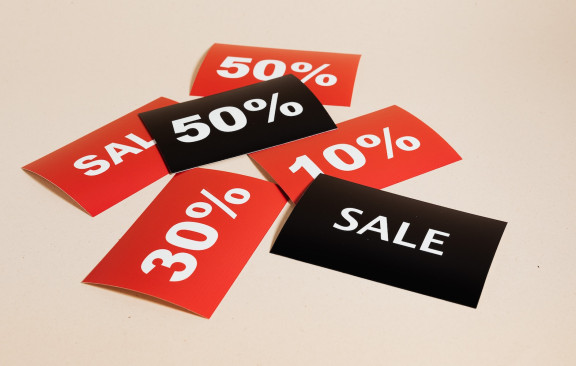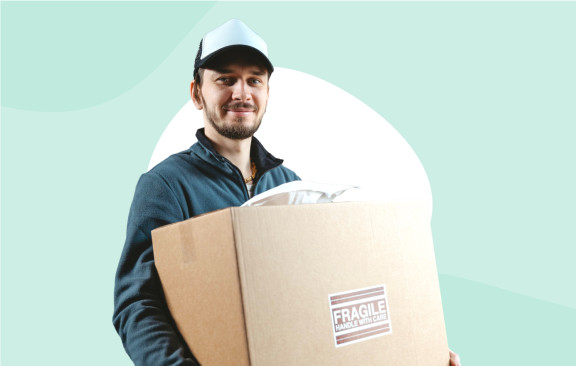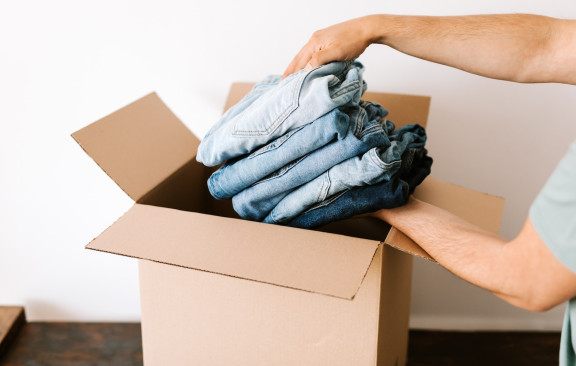Wholesale Clearance vs. Liquidation - which is better for product sourcing?
Wholesale clearance is better suited for those who want to sell branded products while wholesale liquidation is for those who want to sell unbranded products. Purchasing wholesale liquidation products that are branded may not be a good idea since these companies are usually shutting down or going out of business. This means that the product you purchase from a wholesale liquidation may not have brand value or worse, could have negative brand equity.
Dropshippers are primarily middle men; they take on the hassle of the sale to avoid the headache of the inventory turnover by mediating between buyers and manufacturers. As a dropshipper, you're like an electrical wire; the current passes through you from the power plant to the appliance. In the process, some of the juice leaks out. This is your slice of the pie, your cut of the profits. Often, this is smaller than you'd like, but at least you're not tying up any of your own money.
Sometimes though, it can be tempting to go against the grain when given a chance to get items at really low prices. This could be the wholesale clearance bargains offered on eBay's Wholesale & Job Lots, or if you come across a liquidation or overstock sale. If you handle it right, you can make a killing even if you have to do the fulfillment yourself. But before you plunge neck deep into this venture, you have to understand what wholesale clearance and liquidation sales are and how they work.
Terminology
There are some basic concepts you have to get your head around if you want to be a successful online retailer. You already understand the concept of wholesaling, but why do retailers sell at wholesale prices? Simply put, because inventories exceed sales.
.jpg)
Let's now look at clearance and liquidation.
What is wholesale clearance?
Clearance sales or overstock sales are pretty much what they sound like: sales of items that need to be cleared out because the owners want to stock new ones. They could have also received too much stock and want to sell to get back the money, so they can spend it on other items. Either way, wholesale clearance items are typically brand new with tags still attached, and they may still be in their original packaging.
Pros
- You can get products at cheap prices
- Margins will be higher when you sell them
Cons
- There might be a reason why the product is going through a clearance sale
- The product might be worn out since it has been shelved for so long
Where to find wholesale clearances?
Wholesale clearances can be found on websites or locally around your area. It'll be easier finding them on sites as you'll be able to easily order in bulk and have everything delivered to your home. If you're already in contact with a supplier, you can ask them when they'll be having their next wholesale clearance or sale. You can find 8,000+ suppliers in SaleHoo Directory across all different types of niches. If you haven't found a supplier to work with yet and just want to look for wholesale clearances, you'll want to search forums or Facebook for local clearances.
What is wholesale liquidation?
On the other hand, liquidation sales are for items that are still in inventory when a company or retail establishment closes down. This does not necessarily mean that the business failed; some big-name retail brands close down some outlets to streamline operations or to relocate to a better site. When this happens, they don't always want to bother with packing up and transporting the stock.
These items have also never been used, may still be in their original packaging or have price tags attached if they have been taken off the display shelves. In many cases, liquidation sales offer better deals than clearance sales because “everything must go.” The time element is crucial, so as the deadline approaches, many items such as wholesale shoes go for a song.
Pros
- Your margin can be very high since liquidation prices can be very good
- You can purchase many of the products since the price can be very low
Cons
- If it's a branded product, you'll have to watch out if the brand is going out of business or not (which means you may lose brand equity on your product)
- Even if the product is in good condition, you'll need to watch out for the packaging if it's been shelved for too long
Where to find Liquidation sales?
Liquidation sales can also be found online or around your local area. If you're already working with a supplier, they might not be holding liquidation sales unless they're going out of business or shutting down. Therefore, to find liquidation sales, you might need to look for suppliers or stores that are going out of business. There's a larger chance that they'll be holding liquidation sales.
What are customer returns?
Another category that may not always be featured in ads is customer returns. Returned items are not necessarily faulty; they could have been the wrong color, size, or model. They could also have been returned because the customer changed his or her mind. However, unlike the first two categories, most returned items are considered used and may be classified as:
- Working
- Not working
- Damaged
- Untested
However, when a customer returns the item still sealed in its original packaging, this can be considered brand new in box (BNIB) and advertised as such, although there may be signs of wear on the box itself.
Obviously, when buying customer returns, you only want the BNIB, working or undamaged items unless you can get the damaged/untested/not working items for a ridiculously low price and re-sell them for parts. A good rule of thumb for damaged, not working, or untested items is to anticipate that only 1 out of 10 will be salable, and adjust the threshold for the purchase price accordingly.
Pros
- May be able to re-sell them for parts
- You can ask for direct customer feedback and improve your product
Cons
- May be difficult to re-sell the product if box is damaged
- Might be something inherently wrong with your product that you may need to look into
Caveats
Many clearance, liquidation and customer return sales are typically sold online or through wholesalers specializing in these types of items. They are sold in small lots or pallets, and you can pretty much find anything you need. However, there are some things that you should be careful about. Seasoned overstock sellers can smell a neophyte a mile away, so make sure you wash that new-buyer smell off before taking them on.
Price matters
Buyer psychology is the same everywhere; get one whiff of a “bargain” and you're panting to get at it before someone else snatches it up. The painful reality sets in when you try to unload your “deal” and find out that you paid too much.
It's all in the advertising. A pallet may be advertised as heavily discounted from the retail price, and if you are too excited to check, you may find that the posted retail price is inflated and you have actually paid full or nearly full price for the “discounted” items.
If you're already a registered SaleHoo wholesale directory user, you can find out how much these items are actually selling on eBay by checking it out with the SRL. This will give you an idea of how much you can afford to invest in a pallet to make it worth the effort of stocking items instead of simply dropshipping them.
For example, if there is a big sale at the Nike outlets and you want to know how much Nike currently goes for, you can simply type in “Nike shoes,” and voila!

You can see here that while the success rate is good and the competition is medium, the average price for which a pair of Nike shoes sold was $62.46. If you get a pallet with 10 pairs of new Nike shoes priced at $199 total, you can either make a 40 percent profit by selling them individually, or sell everything you've got at a lower-than-average price. Let's say $50, giving you a perfectly respectable 20 percent profit or so, all else being equal.
Pallet description
Most retailers offloading stock will grade their pallets according to the condition of the items inside, and when the pallet is a mixed one, the items are listed with important details, such as model and brand. These are important considerations because they can spell the difference between a good buy and a bad one.
Stay away from “mystery” boxes unless you like to gamble with your money, hoping to win the lottery. You have about as much chance of getting a good pallet. In most cases, these are the runts of the litter, basically overpriced for the condition and/or type of item or not worth re-selling.
Shipping
You need to find out how you're going to get the pallet before making a purchase. Most companies will ship it to you for a fee. So you need to factor in the additional cost to the overall price of the pallet. Divide that by the number of the items to see if the retail price will cover your costs and your desired profit. Even if it's a local company and you can pick it up, you still need to factor in the price of gas and the value of your time.
Some wholesalers do offer free shipping for a minimum order, so you can also consider that.
Best of both worlds
As a dropshipper, you want to avoid keeping an inventory. At the same time, you want to make the most profit possible, which is more likely when you get from clearance and liquidation sales because prices are jaw-droppingly low. It is possible to take advantage of clearance sales and still avoid buying stock. You can do this by buying from eBay retailers instead of wholesalers. When retailers (those that keep stock) on eBay decide to sell their old stock, you can sell the same items at a slightly higher price, order it from the retailer, pay for it, but have it delivered to your buyer's address.
Of course, buyers can always buy direct from the retailer at the lower price, but if you have all your ducks in a row, you should have better exposure with your individual listing. At any rate, you lose nothing but a little time if the item doesn't sell, and you can always re-list. You need to check that the retailer still has the item available at clearance sale prices, though.
Final thoughts
Buying wholesale clearance or liquidation pallets is not the end of the world for a dropshipper. There is no pressure to continue doing so if conditions are not favorable. When you do buy from clearance sales, just make sure that you have done everything possible to ensure what you buy can be resold at a reasonable profit. With some high-priced lots, you can lose money even if just one item turns out to be a dud.
Want to learn more about buying from wholesalers and liquidators? I thought you might. Click here.











